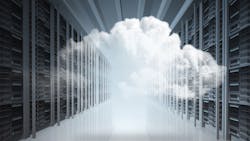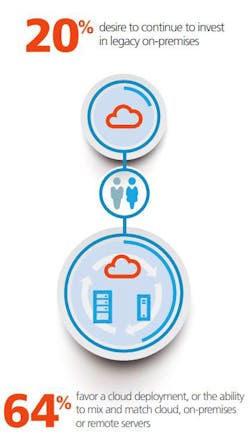The choice between on-premise and cloud ERP systems used to be pretty simple.
Just a few years ago, in fact, manufacturers' only choice seemed to be either for the greater security and access to plant information of the on-site options or for the cheap upfront costs and flexibility that came with the cloud.
It was a simple, clear dichotomy: an online monolith to do it all, or a customized monolith of their very own at home.
Today, though, it's not quite that easy.
To succeed in today's quick, evolving market, manufacturers need the advantages that both sides offer: They need a system that allows them to be as agile, active and mobile as advanced manufacturing demands, but also be tied in to the plant floor enough to provide the real-time data they need to stay competitive.
That means, argues Andy Kyte, vice president and Gartner Fellow, that the days of the monolith are over.
Companies are turning instead to a decentralized, deconstructed hybrid system of mixed vendors, mixed functionality and an even split of on-site and online systems.
It is, he says, a postmodern deconstruction of the traditional model.
"Businesses looking to improve administration today can take advantage of lower costs, better functional fit and process flexibility offered by blending cloud applications with on-premises applications," he explained. "[It's] what we now refer to as 'postmodern ERP.'"
The Hybrid Solution
ERP provider Epicor recently released research that sheds an interesting light on this issue.
In the report, "What the World Wants in a Next-Generation ERP," the company reveals that 64% of survey respondents are either actively pursuing or interested in pursuing a "mix and match" combination of cloud and on-premises ERP solutions, while only 20% are sticking with the legacy monoliths.
That says a lot about the state of the industry. And more importantly, it complicates the decision process facing manufacturers on the market for new systems.
"There are a lot of options today in terms of technology, but it's important to focus on it as a business discussion, not a technology discussion," explains Matt Kenney, principal consultant at McGladrey.
"Anything we do with ERP needs to make financial sense," he says. "You need to understand where you are in your business today and where you want to go. Then we can talk about what systems it will take to get from here to there."
Looking at it like that, he says, simplifies the field.
"At the executive level, they should be doing long-term thinking about the business and that probably involves getting into new markets, producing lower costs and dealing with competition," he says. "I think it's those things that are driving them to consider different ERP systems, cloud-based systems to address some of those changes."
"Sometimes you will see that you only need a few things in the cloud," he says. "For example, maybe what makes sense is a cloud-based CRM system today and then bring everything to the cloud in five years."
But the point, he says, is to keep it focused on the business.
"This is the place where you can start," he says.
About the Author
Travis M. Hessman
Editor-in-Chief
Travis Hessman is the editor-in-chief and senior content director for IndustryWeek and New Equipment Digest. He began his career as an intern at IndustryWeek in 2001 and later served as IW's technology and innovation editor. Today, he combines his experience as an educator, a writer, and a journalist to help address some of the most significant challenges in the manufacturing industry, with a particular focus on leadership, training, and the technologies of smart manufacturing.

